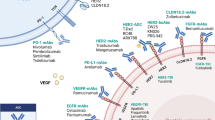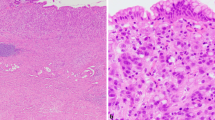Abstract
Background
It is still controversial whether tumor size (Ts) should be considered an important indicator for evaluation the prognosis of gastric cancer (GC). The purpose of this study was to elucidate the prognostic prediction superiority of Ts in the large-scale cohort of GC patients.
Methods
Data from 1,521 patients who underwent the curative resection were analyzed for demonstration the prognostic value of Ts. In addition, a tumor size-node-metastasis (TsNM) classification system was proposed to evaluate the comparative superiorities of the prognostic prediction of GC patients.
Results
With the univariate and multivariate analyses, Ts was identified as an independently prognostic predictor of GC patients, as was T stage. Ts was demonstrated to have smaller Akaike information criterion and Bayesian Information Criterion values within the Cox regression analyses than shown by T stage, which represented the optimum prognostic stratification. TsNM classification was also found to be competent for accurately prognostic evaluation of GC patients. The matched case–control logistic regression showed that TsNM classification could provide very powerful discriminations of patients’ overall survival, compared with TNM classification. Additionally, Ts stage was found to enhance the survival discriminations in patients with certain clinicopathological characteristics, including male gender, T4a stage, N0 stage, diffuse type of Lauren classification, or age ≤60 years.
Conclusions
Ts should be recommended as an important clinicopathologic variable to enhance the accuracy of the prognostic prediction of GC clinical patients.


Similar content being viewed by others
References
Chae S, Lee A, Lee JH. The effectiveness of the new (7th) UICC N classification in the prognosis evaluation of gastric cancer patients: A comparative study between the 5th/6th and 7th UICC N classification. Gastric Cancer. 2011;14:166–71.
Sun Z, Zhu GL, Lu C, Guo PT, Huang BJ, Li K, et al. A novel subclassification of pT2 gastric cancers according to the depth of muscularis propria invasion: superficial muscularis propria versus deep muscularis propria/subserosa. Ann Surg. 2009;249:768–75.
Yamaguchi N, Yanagawa T, Yoshimura T, Kohrogi N, Tanaka K, Nakamura Y, et al. Use of tumor diameter to estimate the growth kinetics of cancer and sensitivity of screening tests. Environ Health Perspect. 1990;87:63–7.
Plevritis SK. A mathematical algorithm that computes breast cancer sizes and doubling times detected by screening. Math Biosci. 2001;171:155–78.
Nakamura S, Fukui T, Taniguchi T, Usami N, Kawaguchi K, Ishiguro F, et al. Prognostic impact of tumor size eliminating the ground glass opacity component: modified clinical T descriptors of the tumor, node, metastasis classification of lung cancer. J Thorac Oncol. 2013;8:1551–7.
Schwab FD, Bürki N, Huang DJ, Heinzelmann-Schwarz V, Schmid SM, Vetter M, et al. Impact of breast cancer family history on tumor detection and tumor size in women newly-diagnosed with invasive breast cancer. Fam Cancer. 2014;13:99–107.
Kang S, Kim YS, Choi HJ, Kim MH, Cho KS. Additional value of combined evaluation of tumor size with lymph node size in the detection of lymph node metastases in early-stage cervical cancer patients. J Comput Assist Tomogr. 2013;37:572–6.
Shields CL, Kaliki S, Furuta M, Fulco E, Alarcon C, Shields JA. American Joint Committee on Cancer classification of posterior uveal melanoma (tumor size category) predicts prognosis in 7731 patients. Ophthalmology. 2013;120:2066–71.
Claret L, Gupta M, Han K, Joshi A, Sarapa N, He J, et al. Evaluation of tumor-size response metrics to predict overall survival in Western and Chinese patients with first-line metastatic colorectal cancer. J Clin Oncol. 2013;31:2110–4.
Chattopadhyay S, Cross P, Nayar A, Galaal K, Naik R. Tumor size: a better independent predictor of distant failure and death than depth of myometrial invasion in International Federation of Gynecology and Obstetrics stage I endometrioid endometrial cancer. Int J Gynecol Cancer. 2013;23:690–7.
Süer E, Baltaci S, Burgu B, Aydoğdu Ö, Göğüş Ç. Significance of tumor size in renal cell cancer with perinephric fat infiltration: is TNM staging system adequate for predicting prognosis? Urol J. 2013;10:774–9.
Horvath LE, Werner T, Boucher K, Jones K. The relationship between tumor size and stage in early versus advanced ovarian cancer. Med Hypotheses. 2013;80:684–7.
Berretta R, Patrelli TS, Migliavacca C, Rolla M, Franchi L, Monica M, et al. Assessment of tumor size as a useful marker for the surgical staging of endometrial cancer. Oncol Rep. 2014;31:2407–12.
Huang CM, Xu M, Wang JB, Zheng CH, Li P, Xie JW, et al. Is tumor size a predictor of preoperative N staging in T2-T4a stage advanced gastric cancer? Surg Oncol. 2014;23:5–10.
Lu J, Huang CM, Zheng CH, Li P, Xie JW, Wang JB, et al. Consideration of tumor size improves the accuracy of TNM predictions in patients with gastric cancer after curative gastrectomy. Surg Oncol. 2013;22:167–71.
Zu H, Wang F, Ma Y, Xue Y. Stage-stratified analysis of prognostic significance of tumor size in patients with gastric cancer. PLoS One. 2013;8:e54502.
Saito H, Osaki T, Murakami D, Sakamoto T, Kanaji S, Oro S, et al. Macroscopic tumor size as a simple prognostic indicator in patients with gastric cancer. Am J Surg. 2006;192:296–300.
Wang X, Wan F, Pan J, Yu GZ, Chen Y, Wang JJ. Tumor size: a non-neglectable independent prognostic factor for gastric cancer. J Surg Oncol. 2008;97:236–40.
Liu X, Xu Y, Long Z, Zhu H, Wang Y. Prognostic significance of tumor size in T3 gastric cancer. Ann Surg Oncol. 2009;16:1875–82.
Jun KH, Jung H, Baek JM, Chin HM, Park WB. Does tumor size have an impact on gastric cancer? A single institute experience. Langenbecks Arch Surg. 2009;394:631–5.
Bilici A, Uygun K, Seker M, Ustaalioglu BB, Aliustaoglu M, Temiz S, et al. The effect of tumor size on overall survival in patients with pT3 gastric cancer: experiences from 3 centers. Onkologie. 2010;33:676–82.
Quan J, Zhang R, Liang H, Li F, Liu H, Zhang H, et al. The impact of tumor size on survival of patients with pT4aN0M0 gastric cancer. Am Surg. 2013;79:328–31.
Jaehne J, Meyer HJ, Maschek H, Geerlings H, Bruns E, Pichlmayr R. Lymphadenectomy in gastric adenocarcinoma: a prospective and prognostic study. Arch Surg. 1992;127:290–4.
Nakajima T. Gastric cancer treatment guidelines in Japan. Gastric Cancer. 2002;5:1–5.
Deng JY, Liang H, Sun D, Zhan HJ, Wang XN. The most appropriate category of metastatic lymph nodes to evaluate the overall survival of gastric cancer following curative resection. J Surg Oncol. 2008;98:343–8.
Smith DD, Schwarz RR, Schwartz RE. Impact of total lymph node count on staging and survival after gastrectomy for gastric cancer: data from a large US-Population Database. J Clin Oncol. 2005;23:7114–24.
Nitsche U, Maak M, Schuster T, Künzli B, Langer R, Slotta-Huspenina J, et al. Prediction of prognosis is not improved by the seventh and latest edition of the TNM classification for colorectal cancer in a single-center collective. Ann Surg. 2011;254:793–800.
Cho YK, Chung JW, Kim JK, Ahn YS, Kim MY, Park YO, et al. Comparison of 7 staging systems for patients with hepatocellular carcinoma undergoing transarterial chemoembolization. Cancer. 2008;112:352–61.
World Health Organization. Fact Sheet No 297, Cancer. Feb 1, 2009.
Maehara Y, Oiwa H, Oda S, Sakaguchi Y, Endo K, Ohno S, et al. Surgical treatment and prognosis for patients with gastric cancer lesions larger than 10 cm in size. Oncology. 1995;52:35–40.
Adachi Y, Oshiro T, Mori M, Maehara Y, Sugimachi K. Tumor size as a simple prognostic indicator for gastric carcinoma. Ann Surg Oncol. 1997;4:137–40.
Shiu MH, Perrotti M, Brennan MF. Adenocarcinoma of the stomach: A multivariate analysis of clinical, pathologic and treatment factors. Hepatogastroenterology. 1989;36:7–12.
Maruyama K. The most important prognostic factors for gastric cancer patients: A study using univariate and multivariate analyses. Scand J Gastroenterol. 1987;22:63–8.
Deng J, Liang H, Wang DC, Sun D, Ding X, Pan Y, et al. Enhancement the prediction of postoperative survival in gastric cancer by combining the negative lymph node count with ratio between positive and examined lymph nodes. Ann Surg Oncol. 2010;17:1043–51.
Yamamura Y, Nakajima T, Ohta K, Nashimoto A, Arai K, Hiratsuka M, et al. Determining prognostic factors for gastric cancer using the regression tree method. Gastric Cancer. 2002;5:201–7.
Shiraishi N, Sato K, Yasuda K, Inomata M, Kitano S. Multivariate Prognostic Study on Large Gastric Cancer. J Surg Oncol. 2007;96:14–8.
Acknowledgment
This study was supported in part by grants from the Anticancer Major Projects of Tianjin Municipal Science and Technology Commission 12ZCDZSY16400 and the National Basic Research Program of China (973 Program) 2010CB529301.
Conflict of interest
We declare that we have no conflict of interest.
Author information
Authors and Affiliations
Corresponding author
Rights and permissions
About this article
Cite this article
Deng, J., Zhang, R., Pan, Y. et al. Tumor Size as a Recommendable Variable for Accuracy of the Prognostic Prediction of Gastric Cancer: A Retrospective Analysis of 1,521 Patients. Ann Surg Oncol 22, 565–572 (2015). https://doi.org/10.1245/s10434-014-4014-x
Received:
Published:
Issue Date:
DOI: https://doi.org/10.1245/s10434-014-4014-x




